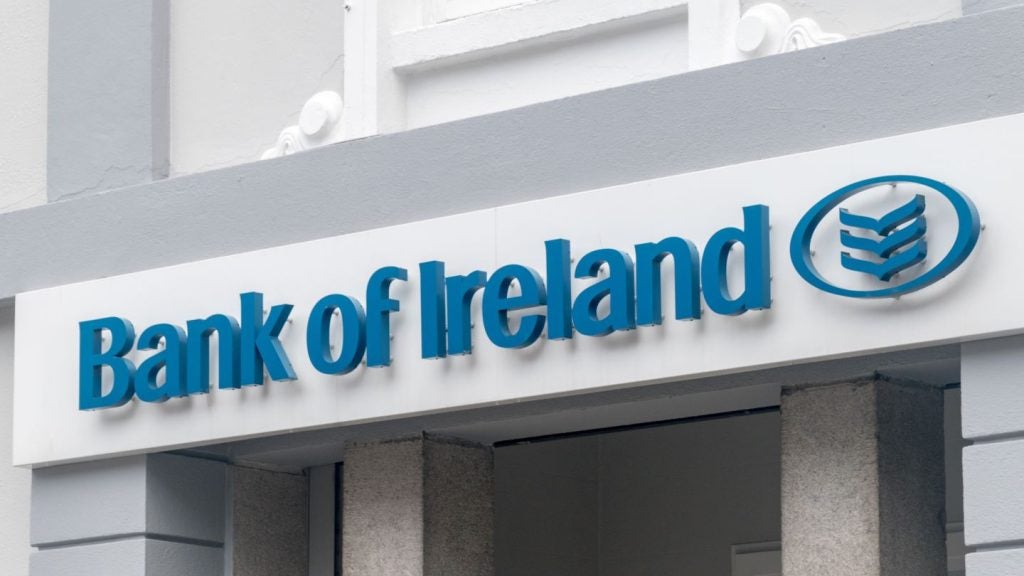
Following a period of stagnation, a banking stimulus programme has enabled the Hungarian lease industry to return to levels of activity last seen in 2009. Paul Golden reports
According to the IMF, Hungary’s economy is recovering from the financial crisis. A surge in investment and private consumption boosted GDP last year despite weak economic activity in the euro area. Growth is projected to decelerate to 2.5% in 2015 and stabilise at around 2% over the medium term.
The IMF says there’s scope to improve overall productivity through a number of fiscal policy measures, including enhancing the efficiency and progressiveness of the tax system through reducing exemptions and gradually eliminating distortionary sectoral taxes, while tackling compliance issues such as VAT fraud.
The banking sector remains under pressure, though its vulnerability to shocks has declined.
While aggregate capital and liquidity positions are adequate, many banks have remained loss-making and have faced a continued contraction in their balance sheets, although the IMF expects the Fair Banking Act to increase price transparency.
In April 2013, the National Bank of Hungary announced the Funding for Growth Scheme. "Despite accommodative monetary conditions and improved market sentiment, bank lending continues to contract," states the IMF in its latest report. "The Funding for Growth Scheme has improved SMEs’ access to finance, reduced borrowing costs and increased loan maturity, but could be modified to better support monetary transmission and enhance its impact on economic growth."
How well do you really know your competitors?
Access the most comprehensive Company Profiles on the market, powered by GlobalData. Save hours of research. Gain competitive edge.

Thank you!
Your download email will arrive shortly
Not ready to buy yet? Download a free sample
We are confident about the unique quality of our Company Profiles. However, we want you to make the most beneficial decision for your business, so we offer a free sample that you can download by submitting the below form
By GlobalDataThe IMF has recommended linking the lending rate to the policy rate in a manner that adequately compensates banks for lending to riskier SMEs and reducing the tax burden on banks and has encouraged the government to discuss with banks ways to improve their operating environment.
It also believes the state’s role in the banking system needs to be contained and that lending activity should be based on adequate risk-management practices.
Gabor Levai, secretary general of the Hungarian Leasing Association says the main reason for the 24% growth in the Hungarian leasing market in 2014 was the ability for banks and leasing companies to access funding at very low rates of interest.
"The most significant development in this market over the last 12 months has been the growth in equipment finance, especially agricultural equipment which was up by more than 50% in 2014 as a result of good market conditions."
Total new leasing business for 2014 was HUF453bn (1.5bn), while the number of contracts signed was down 4% from 2013.
Levai explains that approximately 60% of the Hungarian lease market is controlled by bank-owned companies, with independents accounting for 30% and the remainder going to manufacturer-owned lessors.
"We don’t expect the market to grow at the same level this year as in 2014," Levai adds: "Our prediction for 2015 is for solid growth."
The total portfolio managed by Hungarian leasing companies decreased by 3% in 2014 to reach HUF1.43trn (4.7bn).
Deutsche Leasing Hungary general manager and vice-president of the Hungarian Leasing Association Katalin Nyikos observes that the proportion of new assets in 2014 was significantly higher compared to previous years (50% of all contracts and 80% of the total financed amount).
Nyikos says: "The driver of that investment was the growth stimulus programme of the National Bank of Hungary, which has the aim of supporting SMEs accessing favourable funding for investment.
"Credit institutions were provided with local currency-denominated refinancing at zero percent while they were obliged to lend to SMEs at an interest margin capped at 250 basis points or 2.5%.
"Leasing companies have had access to these funds since January 2014 and while it has penetrated all sectors, agriculture, manufacturing industry and transportation have benefited the most. Lease companies have drawn down 28% of the total amount released by the scheme."
Machinery finance recorded 47% growth last year (especially the agricultural sector) while fleet (15%) and truck and bus leasing (8%) also recorded significant expansion.
There was a 28% increase in the number of machinery and equipment contracts in 2014, with the most dramatic increase being recorded in the agricultural machinery segment where the value of contracts rose by 60%.
Around two-thirds of leasing volume in this area of the market was funded through the Funding for Growth Scheme.
Fleet contracts were up 12%, with 94% of financing going on new vehicles and almost 90% of contracts financed through operating lease.
The number of truck and bus contracts declined by 2% compared with 2013. IT equipment leasing grew by 3% in terms of the number of contracts, albeit with one deal accounting for more than two-thirds of this expansion.
The ratio of corporate/SME customers to retail clients has increased significantly, but Nyikos accepts that the motor vehicle market has some way to go before it returns to the levels seen before the global financial crisis.
"All participants in the sector considered 2014 to be a healthy year from a net book value perspective, although falling margins and significant burdens from past foreign exchange retail financing impacted the profitability of most market players," says Nyikos.
"As for this year, stagnation or modest growth is expected. Investments could be boosted if new EU subsidy programmes (for the 2014-2020 fiscal period) are introduced – the market is expecting the new programmes in the second half of 2015."
According to Nyikos, the structure of the leasing market has changed significantly in the last few years.
She says: "Due to losses related mainly to retail car and real estate business, some players streamlined their activities or shut them down. Bank-owned companies still dominate, while captives maintained their positions.
"There are only a few independent, niche players. Smaller Hungarian leasing companies are exposed to a difficult refinancing environment and deterioration in their portfolios."
Attila Illes, country sales manager at Hungary De Lage Landen is also circumspect about the overall health of the lease market.
"We can speak about remarkable growth and positive trends in new business volume, but the market hasn’t recovered since the crisis hit.
"Around 45% of total market exposure has evaporated over the last six years as a result of lower new business volumes – half of the car financing portfolio is gone, as is 35% of production machinery exposure.
"Total market exposure has at least been stable for the past three years, although it is still impacted by the potential risk of Swiss franc (CHF)-denominated business," Illes adds.
"Even though several years have passed since this type of business was taken, one quarter of the total market is linked to the CHF financing currency."
In addition to changes to funding, Illes also refers to legal and regulatory developments over the last 12 months.
He says: "The major changes were the new Civil Code and a new, centralised system for asset security registry. Both impacted lease companies’ operations since a new set of legal documents were put in place and new routines for contracting had to be introduced."
Illes agrees that growth this year will not reach close to the levels recorded in 2014. "The government-subsidised financing scheme will continue, but the range of customers might be smaller than in 2014.
"There are opportunities to keep demand up, as customer interest rates – even in local currency – are at the lowest-ever level, which might support the customers’ business case to go for investments.
"But the market is going to be determined by the overall macroeconomics of Hungary and the willingness of foreign investment."
Illes says the balance of market share between bank-owned, independent and captive lessors has also been impacted by the Funding for Growth Scheme.
"The former became stronger in 2014 through the subsidised financing scheme, since bank-owned companies reacted faster and more effectively to the new product’s requirements by having the product available at their parent already.
"The impact of that is that the market turned to the home ground of the bankers, rather than being influenced by price competition."
He describes the volumes generated by the Funding for Growth Scheme as remarkable, with the finance access through the scheme accounting for almost the entire growth in the lease market during 2014.
"The biggest success for the programme was in the agricultural sector where two-thirds of the business was financed, accounting for almost half of all programme funding. Construction, transportation and other industrial assets are also benefiting from the scheme at a lower scale, while light commercial vehicle financing has also gained."
However, he also warns that despite the positive impact of this programme, it is questionable as to how much reserves the lease companies could make within the maximised margin in the programme for unexpected risk costs, when the margin in most cases is lower than their operating expenses.
Another support to the market was launched by the government-owned Exim Bank, which offered subsidised euro funding to export-related end-users.
When asked what his company is doing to encourage growth in leasing activity in Hungary, Illes says it does not look at growth as a target.
"Being a vendor finance company, we focus on the success of partners and encourage their growth in sales and profit. These brings us to the opportunity to manage our (and the lease market’s) growth.
"In order to do so, we should focus on our customer service level, not only in traditional vendor finance activities, but also in the newly established corporate car financing activity under the DLL Automotive brand name to maintain our customer satisfaction on one of the highest level within DLL Europe."
LeasePlan agrees that the Hungarian lease market is improving "slowly but surely" according to a spokesperson for the firm.
"We see growth in the operational lease market, but it’s too early to talk about healthy levels," the spokesperson says.
"There have been some new regulations (mainly taxation) over the past two years which have affected a few industries in particular, including pharmaceuticals, FMCG, retail and tobacco, which resulted in ‘de-fleeting’. New car registration seems to continue to grow, which is promising."
The spokesperson shares the view that the Hungarian lease market is likely to grow by around 5% this year.
"Operational leasing companies are focusing on growing their market share in the company car market. Since 2012, operational leasing is very much favoured for legal entities, although we have a strong ownership culture which moves in the outsourcing direction at very slow speed."
The LeasePlan spokesperson observes that the top five operational leasing companies represent 83% of the market.
"Three of them are bank-owned, representing 36.5%. LeasePlan is the market leader with 20% and there is one captive with 17% market share in terms of total fleet," he concludes.
"The captive players took over second place in the market a year ago. If we look at the financed portfolio then there has been no change in the order of the players – we were expecting more consolidation in the market, especially regarding the small players, but not much has happened."







